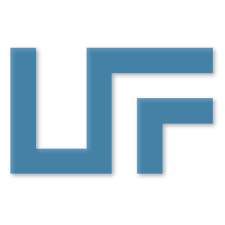Usporedba kurikula Hrvatskoga jezika u osnovnoj školi u Republici Hrvatskoj i u Bosni i Hercegovini / Comparative analysis of Croatian language curricula in Croatia and Bosnia and Herzegovina
|
|
|
|
Pedagogija, didaktika i inkluzija u odgoju i obrazovanju |
Broj rada: 3 |
|
|
Sažetak |
|
Učenje i poučavanje materinskoga jezika u školama determinirano je sustavom odgoja i obrazovanja određene države, odnosno pravnim regulativama i kurikulskim dokumentima. U ovom su radu istaknute osobitosti odgojno-obrazovnih sustava u Republici Hrvatskoj i u Bosni i Hercegovini te izvori na koje se kao takve oslanjaju. Posebnu pozornost zauzima Hrvatski jezik kao temeljni nastavni predmet (materinski jezik) i u hrvatskome i u dijelu odgojno-obrazovnoga sustava Bosne i Hercegovine. Budući da je riječ o istome (materinskome) jeziku, struktura, svrha, ciljevi i ishodi učenja predviđeni kurikulskim dokumentima ne bi trebali imati značajnija odstupanja i razlike. Kvantitativnom i kvalitativnom analizom kurikula Hrvatskoga jezika kao materinskoga jezika u Republici Hrvatskoj i kurikula Hrvatskoga jezika kao materinskoga jezika u Bosni i Hercegovini pokazalo se odstupanje u kvantiteti odgojno-obrazovnih ishoda. Razlike su prvenstveno proizašle iz činjenice da je osnovnoškolsko obrazovanje u Republici Hrvatskoj osmogodišnje, a
|
|
Ključne riječi |
|
|
Tihana BilešićAlfa d. d. |
|
Pedagogija, didaktika i inkluzija u odgoju i obrazovanju |
Number of the paper: 3 |
|
|
Abstract |
|
The mother tongue is an idiom that is acquired at an early age without conscious learning. More than 5.5 million people speak Croatian as their mother tongue. It is the official language in the Republic of Croatia and one of the official languages in Bosnia and Herzegovina. As a mother tongue, Croatian is learned and taught in Croatian schools and in some schools in Bosnia and Herzegovina. The learning and teaching of the mother tongue in schools is determined by the system of education of a particular country, that is, by legal regulations and curriculum documents. This paper highlights the peculiarities of the educational system in the Republic of Croatia and in Bosnia and Herzegovina and the sources they rely on as such. Special attention is paid to the Croatian language as a basic teaching subject (mother tongue) both in Croatian and in the part of the educational system of Bosnia and Herzegovina. Since it is the same (mother tongue) language, the structure, purpose, goals and learning outcomes provided for in the curriculum documents should not deviate and differ significantly. A quantitative and qualitative analysis of the curriculum of the Croatian language as a mother tongue in the Republic of Croatia and the curriculum of the Croatian language as a mother tongue in Bosnia and Herzegovina showed a discrepancy in the quantity of educational outcomes. The differences primarily stemmed from varying lengths of primary school education in the two countries: eight years in Croatia and nine in Bosnia and Herzegovina. The analysis of the documents provides insights into the aforementioned developments and suggests that the educational outcomes and content of the mother tongue curriculum should be aligned more closely with similar values, particularly where significant gaps exist. Additionally, it calls for a strong foundation of scientific and theoretical principles to justify any curricular changes. |
|
Key words |
|
mother tongue, educational outcomes, educational system, subject areas |

